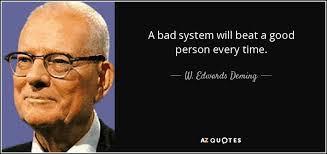
< Click image to open article >
Making Our (Temporary) Long-Distance Relationship Work
- Why I am in a long-distance relationship.
- Six strategies that are enabling our long-distance relationship to work.
- It will be OK in the end. If it’s not OK, it’s not the end.
July 2024
Better Brain Health to Find Inner Peace
- How I am learning to handle my overactive brain
- Strategies to improve my awareness and management of Attention-Deficit-Disorder (ADD)
- It is possible to fall asleep quickly and stay asleep through the night – even with ADD
Originally published in 2018, updated in 2024
Ooh La La – Life Lessons from Nick Foles
- The Wisdom & Perspective of Nick Foles after winning Super Bowl LII
- Just Because Life is Not Fair Doesn’t Mean It Isn’t Good
- How Nick Fole’s perspective helped me during a difficult time searching for a new job.
Published March 2018

Fig the Wonder Dog & the Village that Saved His Life
- A day-by-day journal of Fig’s miraculous recovery from total kidney failure from the event that caused the problem through his total recovery.
Originally published January 2019, Updated Sept. 2024
Section II – Articles About Business and Politics
POLITICS: Why Do the Mice Roar and the Largest Group of Voters Remain Silent?
- Why Politicians Attacking the Rights and Freedoms of People Who Do Not Share Their Core Beliefs
- Do Not Come After My Guns, But It Is OK to Attack the Gays!
- It is a tough time to be an immigrant – even legal immigrants.
- A Disgraceful Situation in Springfield, Massachusetts
- Why are Racism and Discrimination Still Prevalent in America?
- How Do We Get Out of This Political Mess?
- What Happens If We Do Not Get Out of This Political Mess
October 2024
BUSINESS: The Employee Impact When Private Equity Acquires Your Company – The Good, the Bad, & the Ugly
- A quick definition of Private Equity
- Private Equity is Huge!
- Why is Private Equity Dominating
- Growth Equity vs. Private Equity
- What to expect when Private Equity takes over your company
- How Private Equity Transforms Your Business
- What it takes to survive and thrive in a P/E owned business
June 2023
Politics or “As the Process Ticks!”
- How the Philosophy of W. Edwards Deming Can Be Applied to the Current Political Climate in the United States
- Why most political issues are process problems and why using blame and finger pointing is ineffective.
- Why adding more controls and guardrails to address issues with government services is generally ineffective and inefficient.
January 2018

BUSINESS: Three Ways to Find Gratitude in a Challenging Work Environment
- Why Gratitude is an Attitude
- Embracing the Law of Attraction to focus on positive outcomes
- Finding Gratitude by Keeping Things in Perspective
- You Don’t Have to Own the Negative Emotions of Others
September 2017






